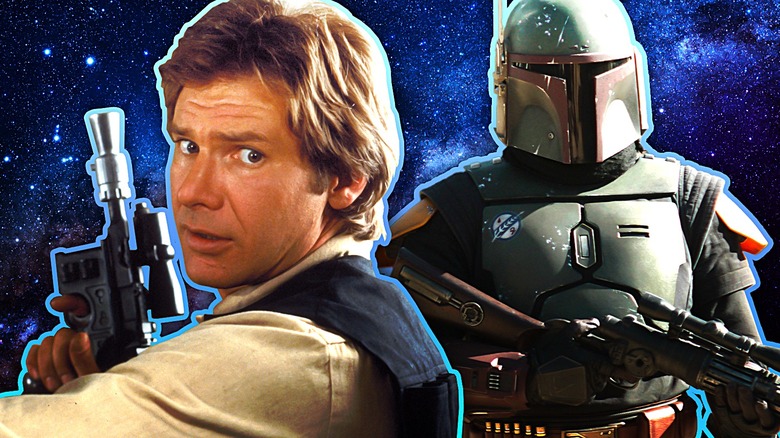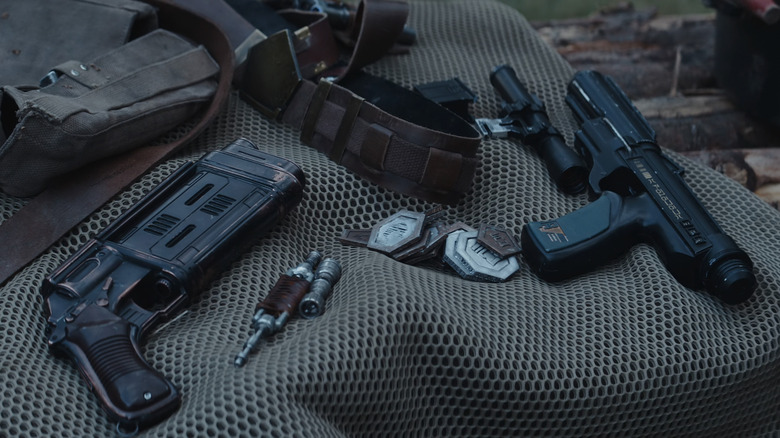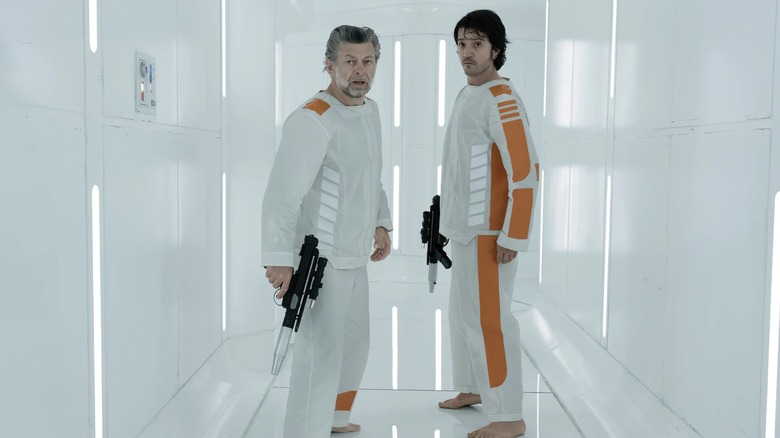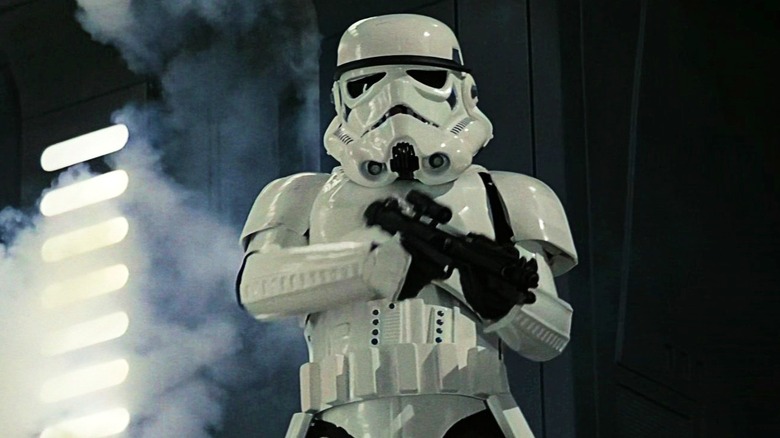How Star Wars Blasters Actually Work - And Why They Suck
It's a question as old as Star Wars itself: Why are blasters so inaccurate? Time and again across the movies and TV shows, we see many types of stormtroopers, battle droids, clones, and elite rebel soldiers make dramatic misses with their laser guns. Is it simply a matter of plot armor? Poor staging? Or is there something more complex going on — something to do with the actual, fictional construction and function of blasters in the Star Wars universe?
The answer is complicated. It's also never been completely addressed by Lucasfilm. However, there's plenty of material for us to pull from to get a sense of how blasters actually work and why they seem to frequently fail their users.
For starters, blasters technically aren't laser guns at all. Instead, they use various types of gas as a fuel source, which is then turned into a plasma or particle beam when fired from the gun. Canonical sourcebooks claim that the different colors of blaster bolts (as the projectiles are known) are caused by different gases being used. The magnetic induction used to transform and fire the bolts imbues them with concussive force and intense heat, which is why Star Wars characters who get shot are often knocked back physically in addition to being burned or wounded. There is some inconsistency to the concussive power of blaster bolts, with stories like "Andor" featuring particularly powerful blasts during firefights. However, this can be explained by the different materials and mechanisms used in different blasters in various eras.
All Star Wars blasters have a few shared elements
The blaster's core features are the gas chamber, the power pack, and the barrel through which the particle beam is focused, which could include a variety of more complex parts to enhance performance. As seen in any given Star Wars installment, there are a wide range of blaster models, all varying in power output, accuracy, and application. Most blasters can have their power levels modified on the fly to engage a stun mode. Other mods of various types are available throughout the Star Wars timeline to affect things like range, rate of fire, and recoil. This can result in especially powerful weapons, like the bowcaster that Chewbacca uses.
As of this writing, the old Star Wars Expanded Universe, now known as Star Wars Legends, has more detailed explanations of how blasters work than the official canon. In Legends, it's revealed that blasters would overheat due to the constant process of gas being super-heated by the weapon's power supply. This mechanic rarely comes up in the movies and shows, but if you've ever played a Star Wars video game, you'll be well acquainted with it. In Legends stories, Tibanna gas is also the predominant fuel used to power blasters — the same resource mined from Bespin on Cloud City.
Because blasters use gas to supply ammunition, reloading is rarely a problem. However, the weapons aren't without their shortcomings, as demonstrated throughout the franchise.
There are reasons why Star Wars blasters sometimes fail
Taking into account the canon and Legends explanations for how blasters function, it makes some amount of sense that they aren't always the most reliable weapons. Creating and releasing such powerful, raw energy isn't easy in a sci-fi universe. It's also worth noting that blaster bolts often move much more slowly than you might think.
The accuracy issues that are frequently mentioned in fandom debates may partially be due to the sheer power a blaster conveys. Where a real-world gun is designed to fire a physical round of ammunition as accurately as possible, most of a blaster is built to create the very ammunition being released. You can influence the general direction of the blast, but since it's so packed with energy, that may not always have the desired result.
Of course, not every gun in Star Wars is a blaster. There are more traditional projectile weapons, with what we know as guns generally being referred to in-universe as slugthrowers. These are perhaps most notable for their use by Tusken Raiders, whose cycler rifles are seen throughout the films. Such weapons fire fast-moving, physical ammunition (much like real-world guns) that can't be deflected by lightsabers. Given these advantages, you might think they'd be more popular in the Star Wars universe. Most likely, blasters' efficiency and overall power are too good for many to pass up.
Do blasters really suck, or is it just plot armor?
We now come back to the age-old question: Do blasters really suck, or is it just plot armor? As discussed above, there are plenty of reasons to suspect that a blaster's reduced accuracy is caused by in-universe, mechanical issues. However, that simply doesn't explain it all.
There are times when characters shoot poorly on purpose, most famously in "A New Hope," when the stormtroopers on the Death Star are ordered to let the rebels escape so that they can be tracked to their hidden base. Other times, there's just too much inconsistency. For instance, on one episode of "Star Wars Rebels," Captain Rex complains while fighting in stormtrooper armor that he can't see anything through the helmet. Once he removes it, he starts shooting like a deadeye, suggesting that the blaster itself never caused the inaccuracy.
You could write moments like this off as simple wink-and-nod acknowledgements of the now-infamous blaster accuracy question. However, that doesn't remove them from canon. In any story, ultimately, people who need to die will get shot, and people who need to live won't. It's one of those narrative conveniences that we all just passively accept in order to enjoy whatever we're watching. Star Wars is no different. Skill has a huge impact on blaster accuracy at times, and seemingly very little at others. Such is the fickle nature of space guns in a galaxy far, far away.
To read more about weaponry in a galaxy far, far away, check out the most powerful weapons in the Star Wars universe.



